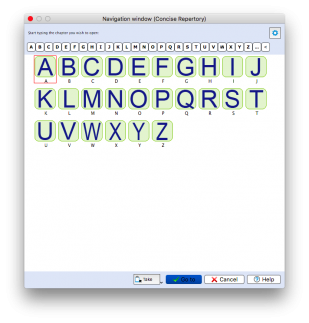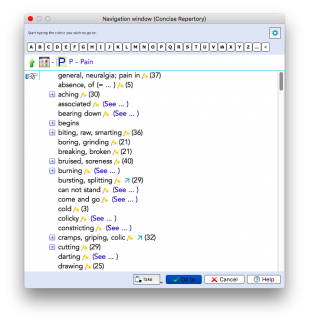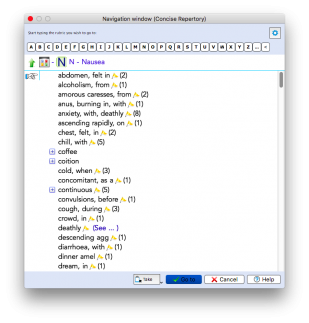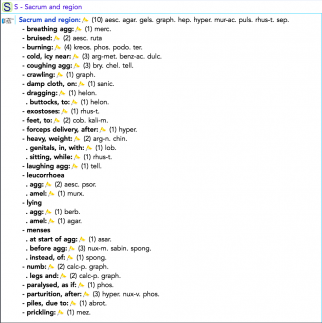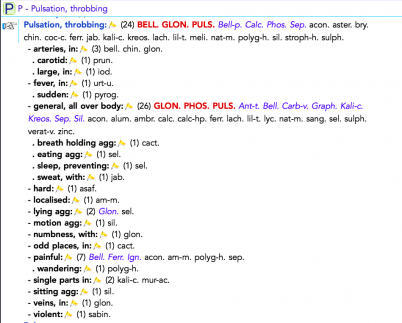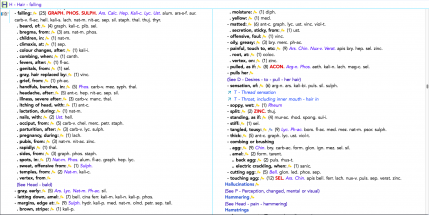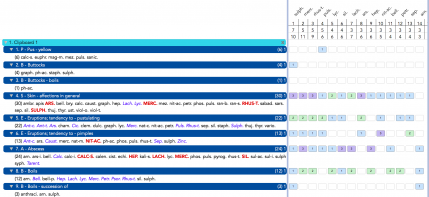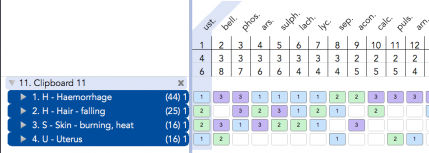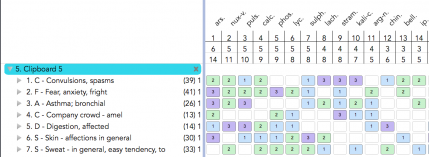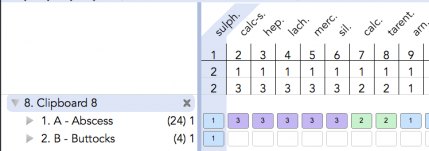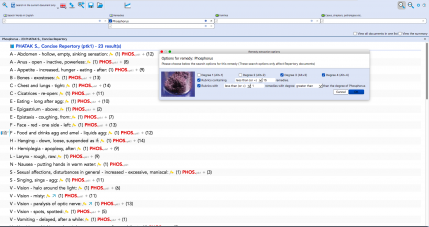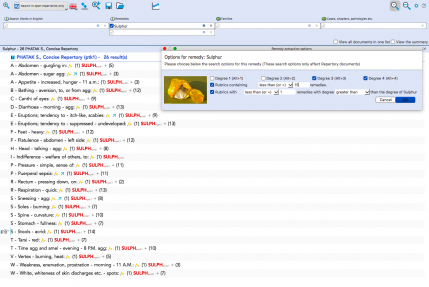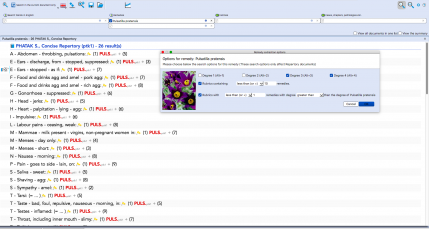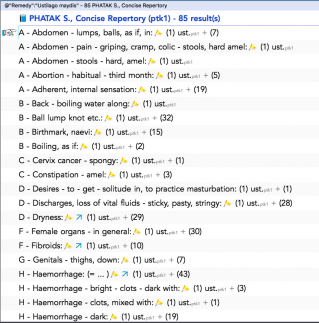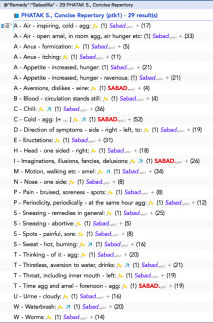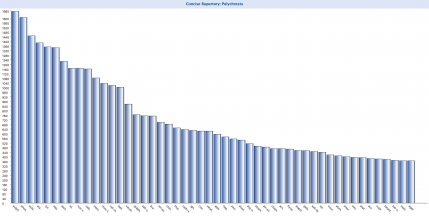Phatak's Concise Repertory
offers the busy Homeopath a unique clinical alternative to the large modern repertories
It contains concise clinical rubrics in an accessible alphabetical structure
Phatak synthesises the confirmed remedies from the repertories of Boger, Boenninghausen, Kent, Boericke, Burnett, Clarke and combines this with his own vast clinical experience.
It is my belief that Dr. Boger wished to compile a concise repertory arranged in alphabetical order rather than regional one. In the same way a concise materia medica, in which all relevant symptoms pertaining to each remedy are given, was desirable. He has given clues in his Synoptic key for compiling such books. With my poor intellect and limited knowledge of homeopathy I have tried to fulfil his wish. How far I am successful in my attempt, only time will show.
July 1977 S.R. Phatak.
When to use Phatak's Concise Repertory?
- Use Phatak's Concise Repertory when you have a case with obvious affinities, sphere of action and global sensations (simmilar symptoms in several parts that can be generalised).
- Avoid when you have clear mentals and well-described characteristic particulars
* NOTE - All of Phatak's Concise has been incorporated into Synthesis!
The rubrics in Phatak's Concise Repertory follow the Boger-Boenninghausen principle of grand generalisation - making it the goto repertory for a 'genius' type analysis.
-
A Genius repertorisation is built in the following way:
- One selects rubrics to represent the;
- Type of pathology (sphere of action - e.g. malignant, catarrhal, rheumatic etc)
- Affinities (Seat of action - locations, tissues, organs, systems)
- Aetiology / Causation (e.g. fright, cold wind, hair-washing)
- General modalities (e.g. worse for heat)
- General sensations (e.g. burning - Ars., Sharp stitching - Bry.)
- General traits (e.g. dull, slow, hyperactive, alert, collapsed etc.)
- Susceptible phases (e.g. infancy, puberty, menopause, old age etc.)
- Body type / constitution (e.g. emaciated, obese, wiry etc.)
- Peculiar symptoms: Keynotes
- One selects rubrics to represent the;
This approach differs from the Kentian method, where a synthetic approach is taken to the repertory. I.E. each rubric has a series of levels, where the main phenomena is qualified with further descriptions in order to 'drill-down' from the common to the more singular and uncommon expressions. The danger with this approach is that one can get too specific too quickly and risk missing remedies that are listed in a similar rubric in another location.
The following list comes from the introduction to Phatak's Matera Medica and gives a very clear impression of how Dr Phatak has synthesised the twin approaches of Boger and Kent, then distilled this work into a very unique clinical repertory with an easy-to-use alphabetical structure. The aim of Phatak's repertory is not to supercede the more complete works by the aforementioned masters, but to complement them - making their works more approachable for the busy Homeopath.
-
Hints for beginners
-
Materia Medica and Repertory are the twin pillars on which successful practice of homeopathy stands.
- Both are complementary to each other.
- None is complete in itself.
- Study of materia is a long drawn out effort.
- There is no short or easy road to success.
-
Drugs should become your friends.
- You can identify your friend from the way he rings the bell, taps or opens the door, climbs the foot-steps etc.
- Similarly you should be able to know the drug even when it is partially seen.
-
The marks of identification of the drug are found in its Generalities, Modalities (i.e. worse and better) and Mind.
- A thorough grasp of these headings helps you to identify the drug in relation to the patient.
- A thorough grasp of these headings helps you to identify the drug in relation to the patient.
-
The relative importance of this drug is to be fixed in your mind by comparing it with other drugs under the same rubric.
- This appears to be tedious.
- But the drug picture slowly gets firmly and clearly set in your mind.
-
-
Symptoms
-
The most difficult thing in homeopathy is interpretation of symptoms.
- When the patient is telling his story in his own words, you should be able to fix these, in terms of rubrics given in the repertory.
- If you have grasped the materia medica well, certain drugs will automatically come to your mind.
- Verify them in repertory.
-
Causation, modalities are more important.
- The peculiar symptom - which, underlying pathology fails to explain - does many a time point towards the suitable drug.
- The peculiar symptom - which, underlying pathology fails to explain - does many a time point towards the suitable drug.
-
When a cup is half-ful it is half empty also.
- While interpreting symptoms, try to look at the same thing from various aspects.
- While interpreting symptoms, try to look at the same thing from various aspects.
-
While reading materia medica also, try to remember the peculiar things in the drug.
- Bland discharges of Pulsatilla.
- " Can't throw things off " in Zincum Met, "Great vatiety of symptoms" in Mercurius etc.
- As said before these are the identification marks of the drug.
-

